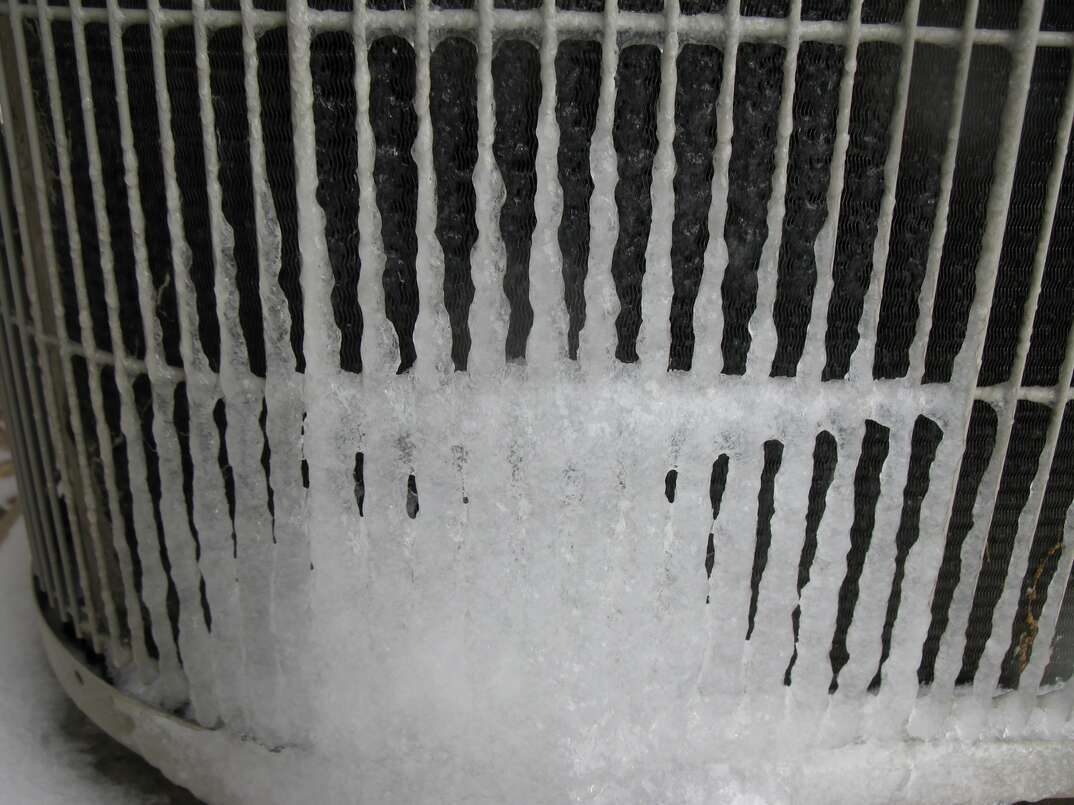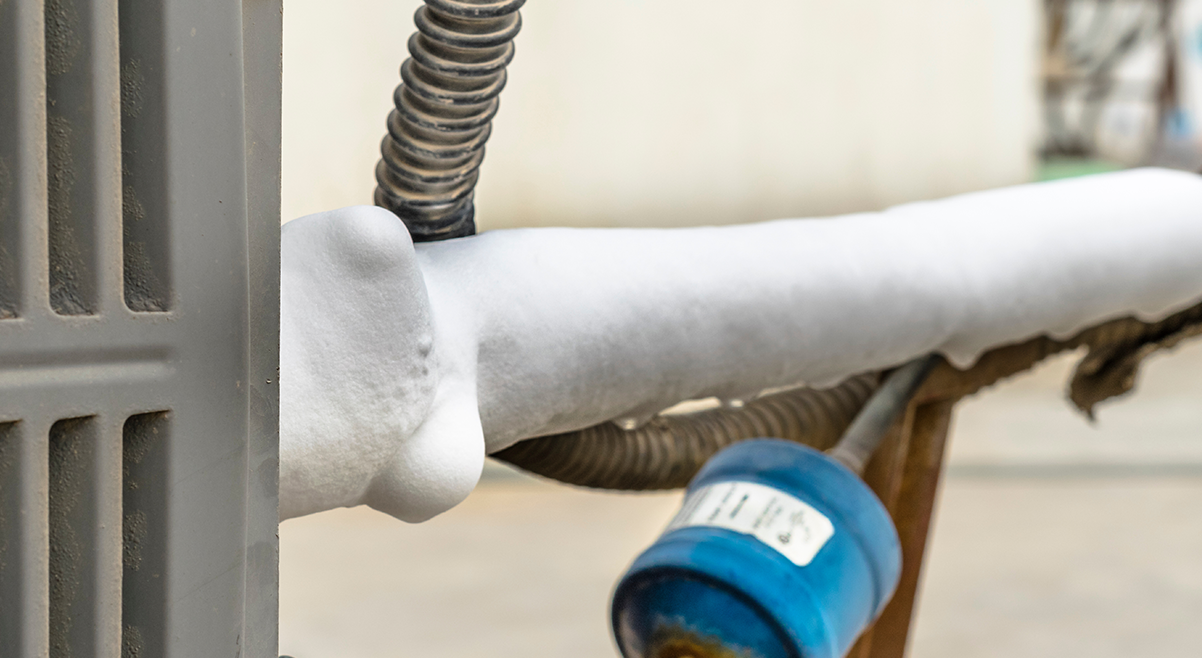My AC Pipe Is Frozen Solid - What Do I Do? Steps for Resolution
My AC Pipe Is Frozen Solid - What Do I Do? Steps for Resolution
Blog Article
Every person maintains their unique assumption with regards to Air Conditioner Frozen? How To Fix your Frozen AC Line.

Introduction
Uncovering that your AC pipe is frozen can be concerning, particularly during hot summer season when you count on your ac unit one of the most. Recognizing what to do in such a scenario is critical to stop more damage to your air conditioning system and ensure your comfort indoors.
Understanding the Causes
Several elements can contribute to the freezing of an air conditioning pipeline. Comprehending these causes can assist you deal with the concern properly.
Lack of Airflow
One typical source of an icy a/c pipeline is inadequate airflow. When the air flow over the evaporator coil is limited, it can cause the coil to drop below freezing temperature, leading to ice formation on the pipeline.
Reduced Refrigerant Levels
Not enough refrigerant degrees in your AC system can additionally lead to an icy pipeline. Low cooling agent degrees can cause the pressure in the system to drop, causing the cold of dampness on the evaporator coil.
Winter Conditions
In cooler environments, freezing temperature levels outside can add to the cold of air conditioner pipelines. If your air conditioner device is not properly shielded or if there are leakages in the ductwork, cool air can penetrate the system, triggering the pipe to ice up.
Dirty Air Filters
Unclean or clogged air filters can restrict air flow in your a/c system, resulting in different problems, including a frozen pipeline. It's essential to replace or cleanse your air filterings system on a regular basis to make certain proper airflow and protect against ice build-up.
Indicators of a Frozen AC Pipe
Identifying the signs of a frozen air conditioning pipe is vital for punctual activity.
Lowered Airflow
If you observe a considerable decrease in airflow from your vents, it might indicate a frozen pipe.
Ice Buildup on the Pipe
Noticeable ice accumulation on the cooling agent line or the evaporator coil is a clear indicator of an icy air conditioning pipe.
Strange Sounds from the Unit
Unusual sounds, such as hissing or gurgling, coming from your air conditioner device can signify that there's ice existing on the pipe.
Immediate Actions to Take
When faced with an icy air conditioner pipeline, it's essential to act swiftly to prevent additional damage to your cooling system.
Turning off the air conditioning
The initial step is to shut off your a/c to avoid the system from running and worsening the problem.
Checking for Blockages
Check the location around the indoor unit for any kind of blockages that may be blocking airflow, such as furnishings or drapes.
Thawing the Pipe
You can make use of mild methods like placing towels taken in cozy water around the icy pipe to assist thaw it slowly.
Preventive Measures
Taking safety nets can aid prevent future occurrences of an icy AC pipeline.
Normal Maintenance Checks
Set up regular upkeep get in touch with a professional HVAC specialist to make sure that your air conditioner system is running efficiently.
Changing Air Filters
Frequently replace or cleanse your air filters to stop airflow limitations and keep ideal performance.
Protecting Exposed Pipes
If your AC pipelines are exposed to chilly temperature levels, consider shielding them to stop freezing throughout winter months.
Looking For Professional Help
If DIY approaches stop working to solve the problem or if you're uncertain concerning exactly how to proceed, it's finest to seek assistance from a certified HVAC service technician.
When DIY Methods Fail
If your attempts to thaw the pipe or address other issues are unsuccessful, it's time to hire a professional.
Value of Hiring a Professional HVAC Technician
A qualified HVAC service technician has the knowledge and devices essential to diagnose and repair problems with your a/c system securely and effectively.
Conclusion
Handling a frozen a/c pipe can be a discouraging experience, however knowing exactly how to respond can assist lessen damage and restore comfort to your home. By recognizing the reasons, identifying the signs, and taking punctual activity, you can successfully resolve the issue and avoid future incidents.
What to Do If Your AC Line Is Frozen
Make Sure All Supply and Return Air Vents Are Open
If you notice problems with airflow, the first thing you should do is check your supply and return vents. Supply vents distribute clean, conditioned air throughout your home. As this air becomes stale, it’s pulled into the return vent, where it’s reconditioned before being sent back out through the supply vent.
When these vents are closed, air won’t flow in the home. Before examining your AC, check the vents in every room and ensure they’re all open.
Check for a Dirty Air Filter
Another possible cause of limited airflow is a dirty air filter. Your air conditioner’s filters catch elements you don’t want to breathe in, such as dirt and dust. Over time, filters can become clogged, ultimately blocking air from flowing in and out. The lack of airflow can then cause the entire coil to freeze and will completely restrict any air from moving through it. The AC may need to be powered off for one to two days to allow the coil to thaw after replacing the filter to allow proper functioning of the unit. This debris can also accumulate on your AC’s evaporator coil, requiring a more serious repair. In general, air filters should be cleaned regularly (about every two weeks).
Assess Your Outdoor Unit
In addition to checking your AC, assessing the outdoor unit is a good idea. Also known as the condensing unit, it works with your interior unit to release heat outside. An issue with the outdoor unit can result in rising internal temperatures.
Overgrown Shrubs or Clogged Leaves
From leaves and twigs to shrubs and debris, there’s no shortage of outdoor elements that can accumulate around your condensing unit. When these elements get lodged inside the unit, they can block airflow. Fortunately, removing the blockage can solve the problem.
Sounds of a Broken Fan
Shrubs and leaves aren’t the only things that can impede your outdoor unit’s airflow. If the fan is broken, the unit won’t be able to properly get rid of heat — which means the internal temperature won’t go down. First, make sure the fan is spinning. If it is, check for the following sounds of a broken fan:
Buzzing Rattling Screeching Hissing Clicking Preventative Measures
Nobody wants to deal with a frozen AC line. In addition to causing problems with your air conditioner, they require professional repairs. On the bright side, there are preventative measures you can take to help ensure this issue doesn’t arise in the first place.
https://www.coopergreenteam.com/blog/what-to-do-if-ac-line-frozen

As a devoted person who reads about How can I fix an air conditioner’s frozen pipe?, I thought sharing that segment was a good thing. Are you aware of anybody else who is in the market for the niche? Feel free to promote it. Many thanks for going through it.
Visit My Website Report this page